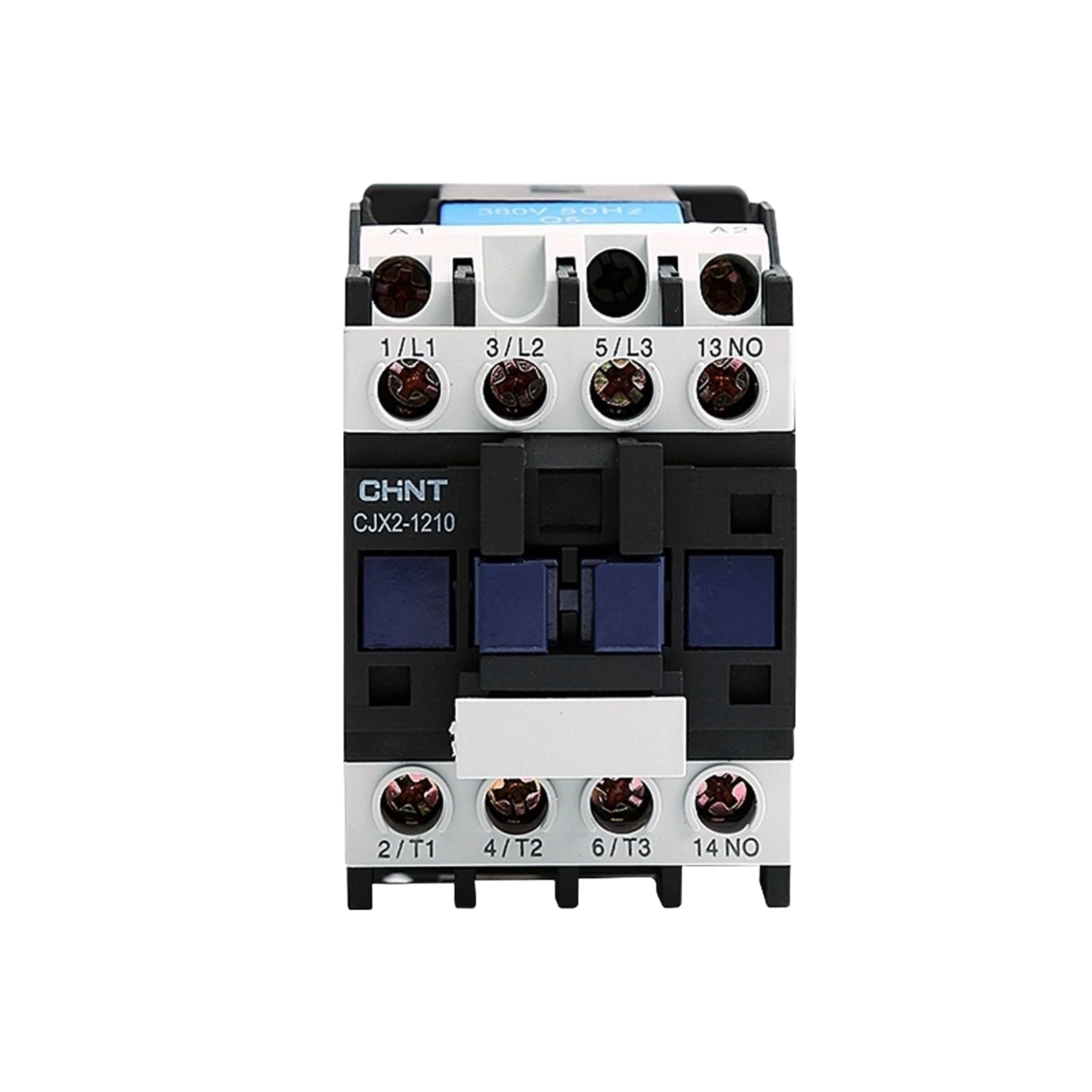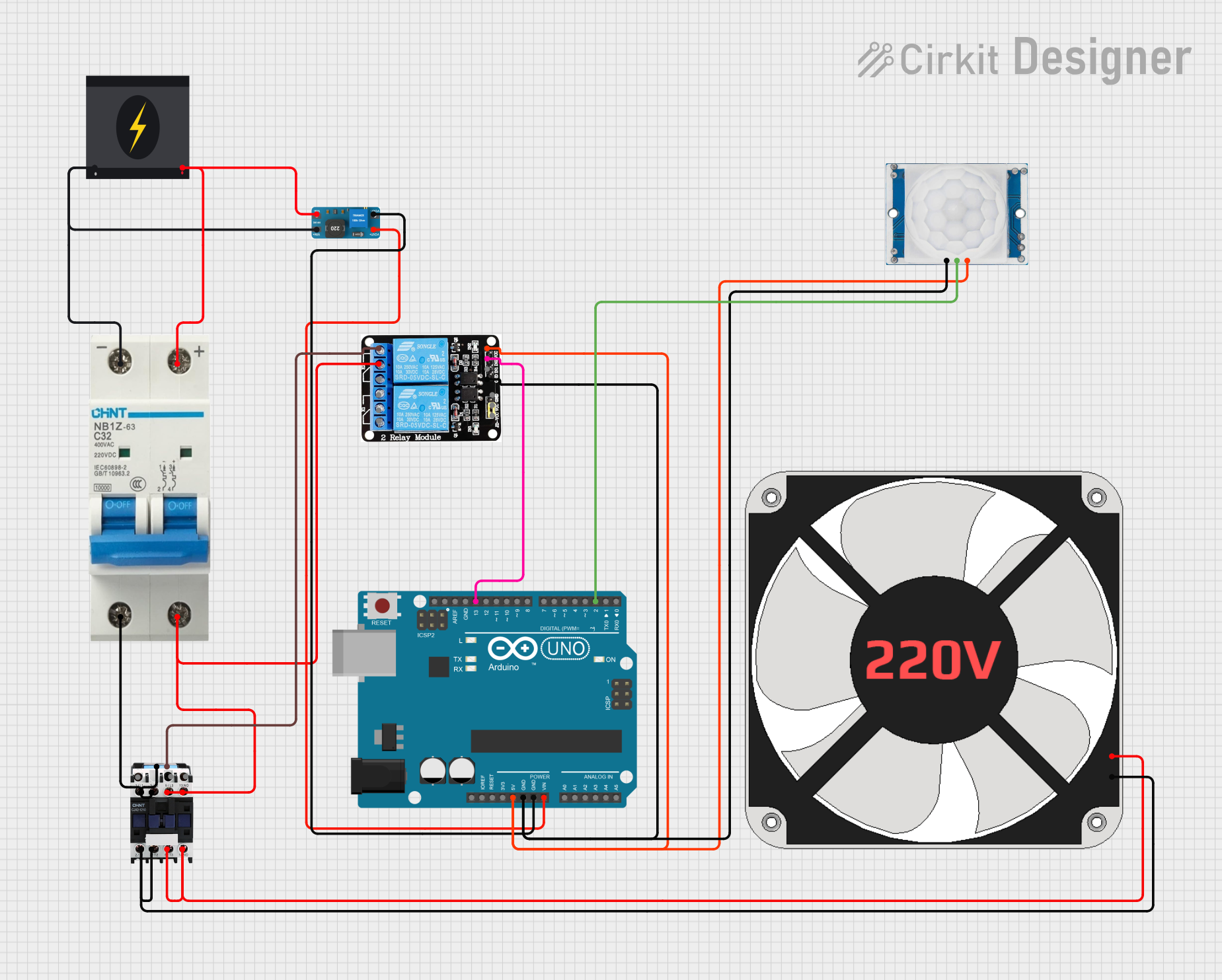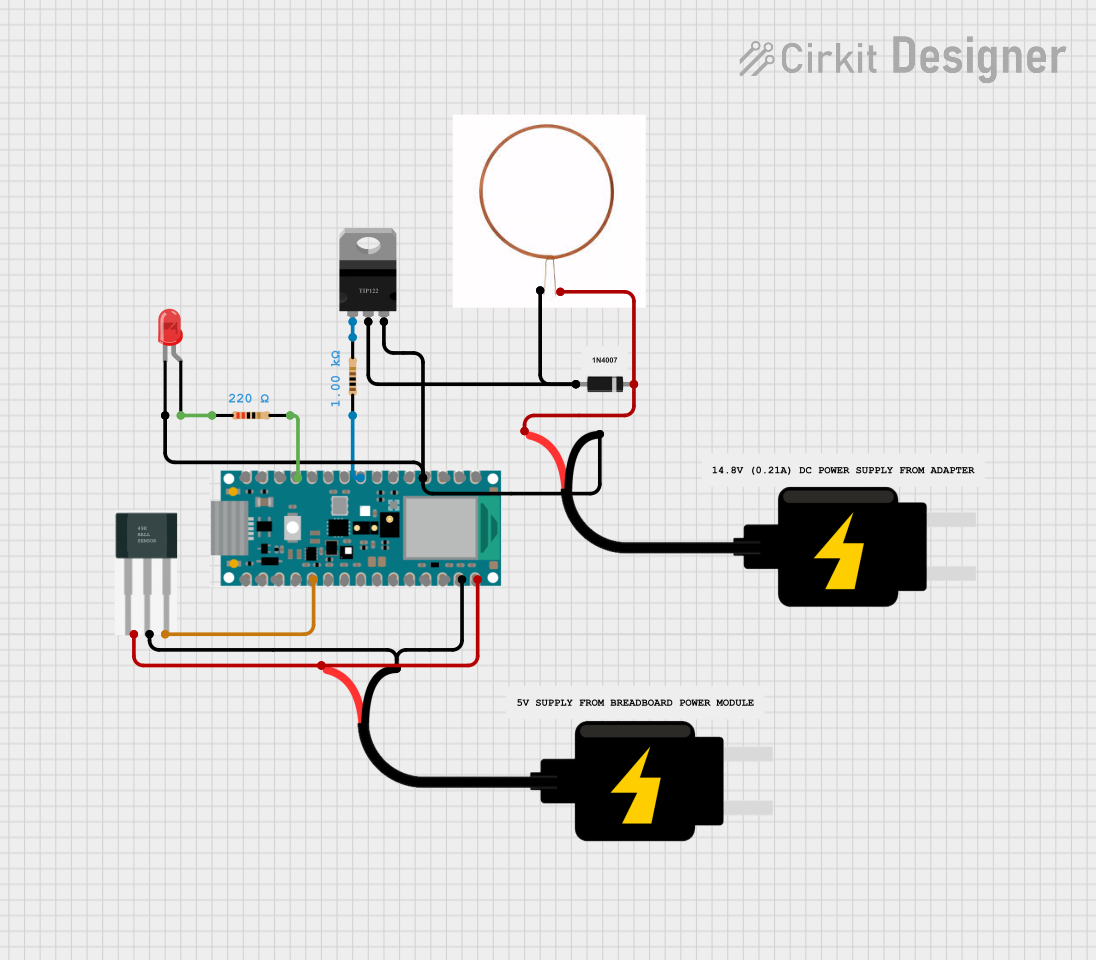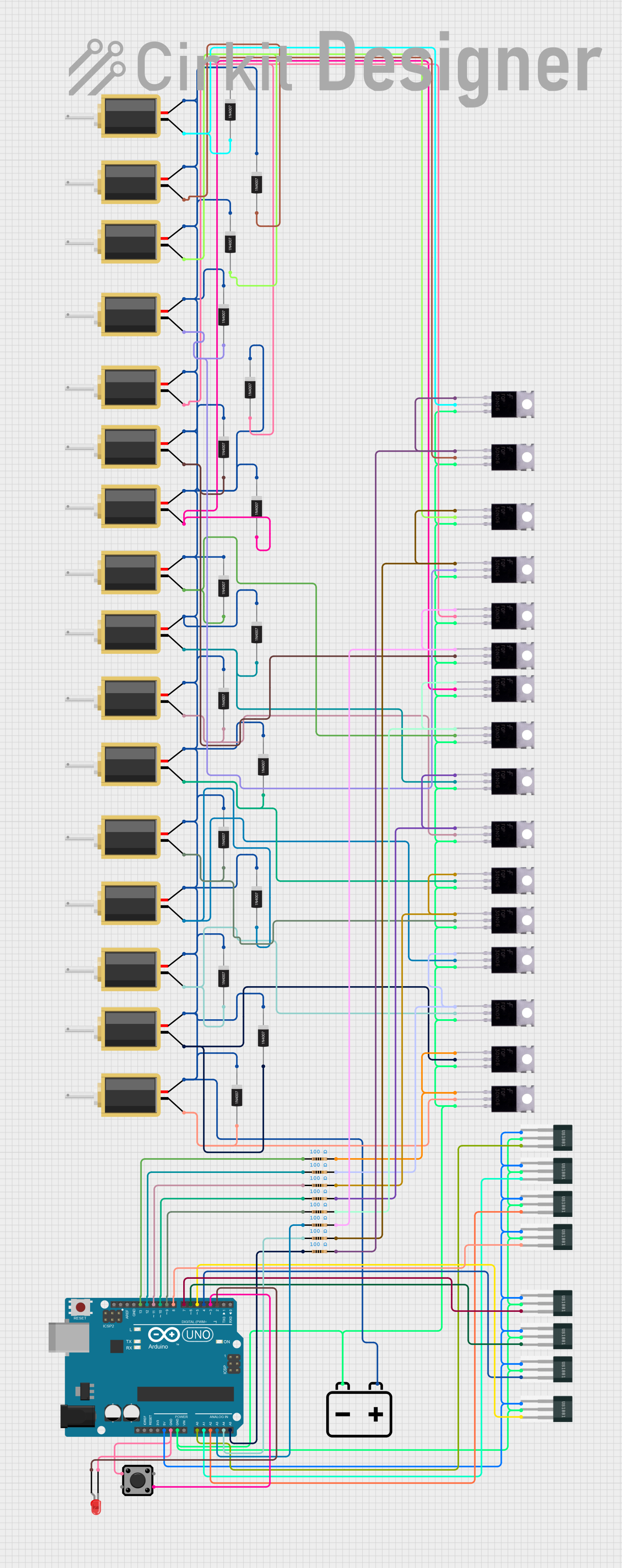
How to Use magnetic contactor: Examples, Pinouts, and Specs

 Design with magnetic contactor in Cirkit Designer
Design with magnetic contactor in Cirkit DesignerIntroduction
A magnetic contactor is an electrically controlled switch designed for switching power circuits, particularly in high-current applications. It operates using an electromagnet that, when energized, closes the contacts to allow current to flow through the circuit. Magnetic contactors are widely used in industrial and commercial applications due to their reliability, durability, and ability to handle high power loads.
Explore Projects Built with magnetic contactor

 Open Project in Cirkit Designer
Open Project in Cirkit Designer
 Open Project in Cirkit Designer
Open Project in Cirkit Designer
 Open Project in Cirkit Designer
Open Project in Cirkit Designer
 Open Project in Cirkit Designer
Open Project in Cirkit DesignerExplore Projects Built with magnetic contactor

 Open Project in Cirkit Designer
Open Project in Cirkit Designer
 Open Project in Cirkit Designer
Open Project in Cirkit Designer
 Open Project in Cirkit Designer
Open Project in Cirkit Designer
 Open Project in Cirkit Designer
Open Project in Cirkit DesignerCommon Applications and Use Cases
- Motor control in industrial machinery
- HVAC systems for controlling compressors and fans
- Lighting control in large buildings
- Power distribution systems
- Automation systems for switching high-current loads
Technical Specifications
Key Technical Details
- Operating Voltage (Coil): Typically ranges from 24V to 480V AC/DC, depending on the model.
- Contact Ratings: Can handle currents from 9A to over 800A.
- Number of Poles: Commonly available in 1-pole, 2-pole, 3-pole, or 4-pole configurations.
- Control Circuit Voltage: Low voltage (e.g., 24V DC or 110V AC) for safe operation.
- Mechanical Life: Typically over 10 million operations.
- Electrical Life: Typically over 1 million operations under rated load.
- Operating Temperature Range: -25°C to +55°C (varies by model).
Pin Configuration and Descriptions
Below is a general pin configuration for a 3-pole magnetic contactor:
| Pin Name | Description |
|---|---|
| L1, L2, L3 | Input terminals for the three-phase power supply. |
| T1, T2, T3 | Output terminals connected to the load (e.g., motor). |
| A1, A2 | Coil terminals for energizing the electromagnet (control circuit). |
| NO (Normally Open) | Auxiliary contact for additional control or signaling when the contactor is energized. |
| NC (Normally Closed) | Auxiliary contact for additional control or signaling when the contactor is de-energized. |
Note: The exact pin configuration may vary depending on the manufacturer and model. Always refer to the datasheet for specific details.
Usage Instructions
How to Use the Component in a Circuit
Determine the Load Requirements:
- Identify the voltage and current requirements of the load (e.g., motor, lighting system).
- Select a magnetic contactor with appropriate ratings to handle the load safely.
Connect the Power Supply:
- Connect the three-phase power supply to the input terminals (L1, L2, L3) of the contactor.
- Ensure proper wiring and secure connections to avoid loose contacts.
Connect the Load:
- Connect the load (e.g., motor) to the output terminals (T1, T2, T3) of the contactor.
Control Circuit Wiring:
- Connect the control circuit voltage (e.g., 24V DC or 110V AC) to the coil terminals (A1, A2).
- Use a push-button switch or relay to control the energization of the coil.
Auxiliary Contacts (Optional):
- Use the auxiliary contacts (NO/NC) for additional control or signaling purposes, such as indicating the contactor's status.
Test the Circuit:
- Verify all connections and ensure there are no short circuits.
- Energize the control circuit to activate the contactor and check if the load operates as expected.
Important Considerations and Best Practices
- Always ensure the contactor's ratings match or exceed the load requirements.
- Use proper wire gauges to handle the current safely.
- Install surge suppressors or snubber circuits to protect the contactor from voltage spikes.
- Regularly inspect and maintain the contactor to ensure reliable operation.
- Follow all safety guidelines and local electrical codes during installation.
Example: Controlling a Magnetic Contactor with an Arduino UNO
Below is an example of how to control a magnetic contactor using an Arduino UNO and a relay module:
// Magnetic Contactor Control with Arduino UNO
// This code energizes a relay to control the contactor's coil.
const int relayPin = 7; // Pin connected to the relay module
void setup() {
pinMode(relayPin, OUTPUT); // Set the relay pin as an output
digitalWrite(relayPin, LOW); // Ensure the relay is off initially
}
void loop() {
// Turn on the relay to energize the contactor
digitalWrite(relayPin, HIGH);
delay(5000); // Keep the contactor energized for 5 seconds
// Turn off the relay to de-energize the contactor
digitalWrite(relayPin, LOW);
delay(5000); // Wait for 5 seconds before repeating
}
Note: Ensure the relay module is rated to handle the contactor's coil voltage and current. Use an external power supply for the relay module if necessary.
Troubleshooting and FAQs
Common Issues and Solutions
Contactor Does Not Energize:
- Cause: No power to the control circuit or faulty coil.
- Solution: Check the control circuit voltage and ensure proper connections to the coil terminals (A1, A2). Replace the coil if damaged.
Excessive Noise or Chattering:
- Cause: Insufficient control voltage or loose connections.
- Solution: Verify the control voltage is within the specified range. Tighten all connections.
Contacts Overheat or Burn:
- Cause: Overloaded contactor or poor connections.
- Solution: Ensure the contactor's ratings match the load requirements. Use proper wire gauges and secure connections.
Contactor Fails to Release:
- Cause: Welded contacts or residual magnetism.
- Solution: Inspect the contacts for damage and replace the contactor if necessary.
FAQs
Q: Can a magnetic contactor be used for single-phase loads?
A: Yes, a magnetic contactor can be used for single-phase loads by connecting only one or two poles, depending on the configuration.Q: How do I select the right magnetic contactor for my application?
A: Consider the load's voltage, current, and power requirements. Choose a contactor with ratings that exceed these values for safe operation.Q: What is the difference between a relay and a magnetic contactor?
A: While both are electrically controlled switches, magnetic contactors are designed for higher current and power applications, whereas relays are typically used for low-power control circuits.Q: Can I manually operate a magnetic contactor?
A: Some models include a manual override feature, but most are designed for electrical control only. Always follow the manufacturer's instructions.